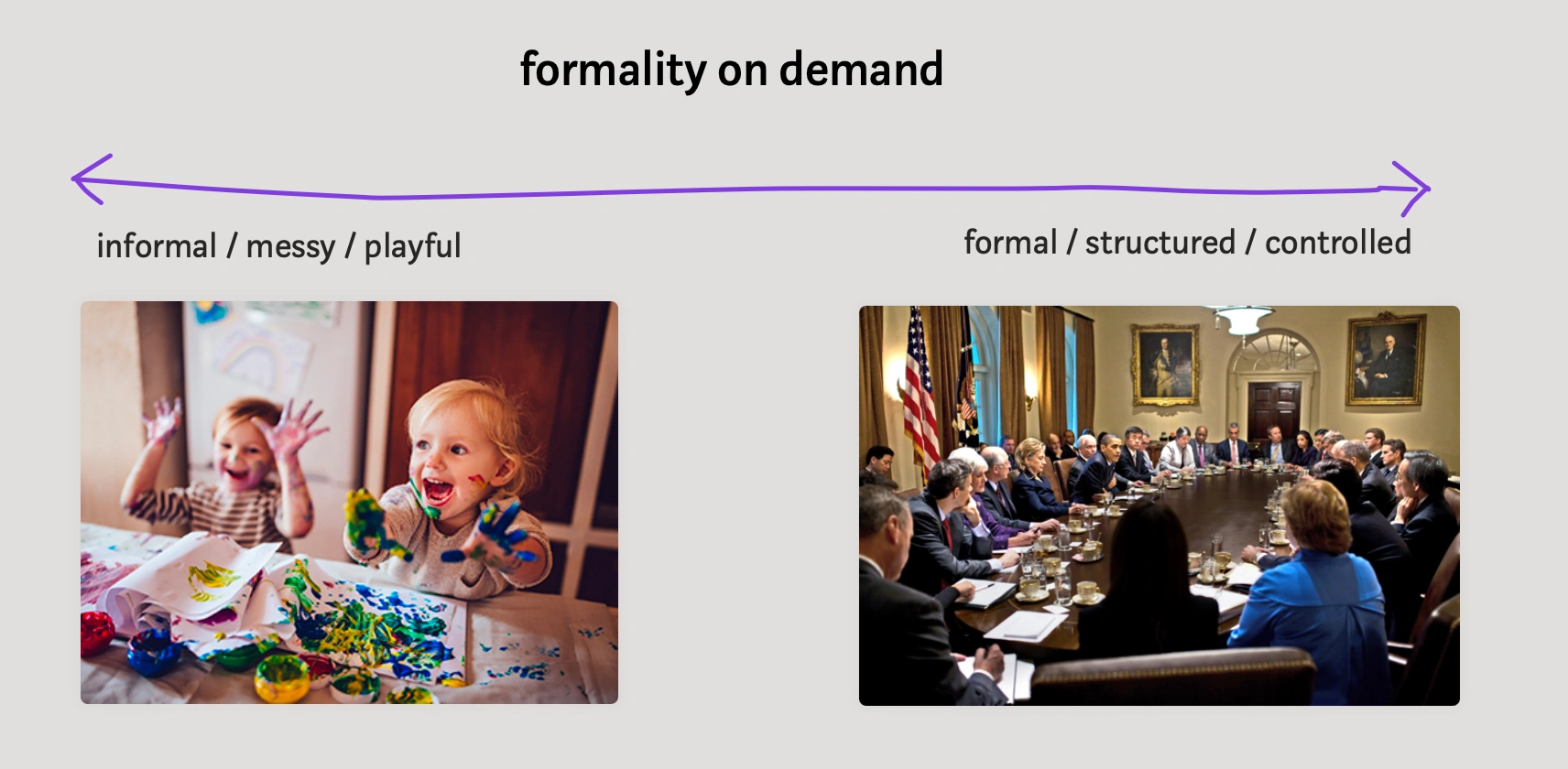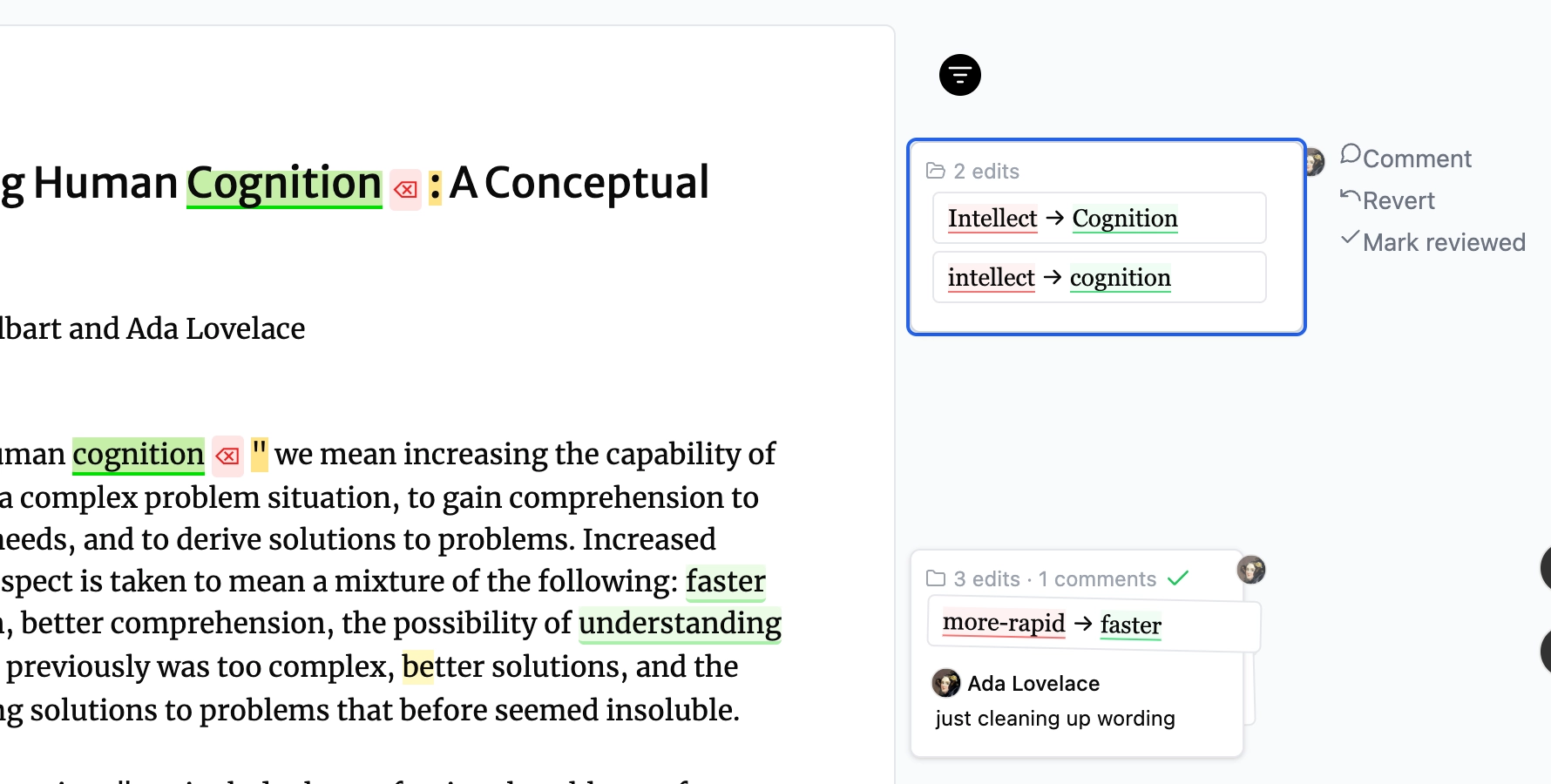The Ink & Switch Dispatch
Keep up-to-date with the lab's latest findings, appearances, and happenings by subscribing to our newsletter. For a sneak peek, browse the archive.
2024 Feb 29
The latest Patchwork demo, which we call Edit Groups, explores lightweight tools for explaining and reviewing edits.
In our interviews with journalists and other writers, we’ve seen a huge variety of edit and review workflows. Some, like two friends writing a blog post, might be very informal. Others, like editing the front-page article on a monthly magazine, might have a lot of stakeholders and process. Often the workflow can change over the course of a project.
Thus we decided to embrace a design principle of formality on demand: choose the level of structure you want, and avoid needless ceremony.
 Many writing tools let writers discuss edits with collaborators, but we think they often make this process too formal. For example, Google Docs suggestion mode requires authors to decide in advance whether or not they are “suggesting” or “editing”, and edits can’t be discussed or turned into suggestions later on. Upwelling, an earlier lab project, was even more formal, requiring authors to create an explicit “draft layer” before making any edits.
Many writing tools let writers discuss edits with collaborators, but we think they often make this process too formal. For example, Google Docs suggestion mode requires authors to decide in advance whether or not they are “suggesting” or “editing”, and edits can’t be discussed or turned into suggestions later on. Upwelling, an earlier lab project, was even more formal, requiring authors to create an explicit “draft layer” before making any edits.
What would it look like to support discussion around edits in a very low-formality way, without any need for branching layers or suggestion mode? This prototype was our attempt. The key ideas are:

Although groups are often spatially colocated (for example, a section rewritten) they might also be spread out across the document (for example, a term search-and-replaced, or addition of Oxford commas throughout the doc).
From using this prototype, we’ve found that seeing recent edits and being able to easily revert them feels very useful—it’s a form of undo that’s not limited to the time order that edits happened.
We’re still figuring out what kinds of groups are useful in practice. Because writing edits often consist of many small changes that could be independently merged, it’s possible that grouping edits into atomically revertable units isn’t a common need in this domain.